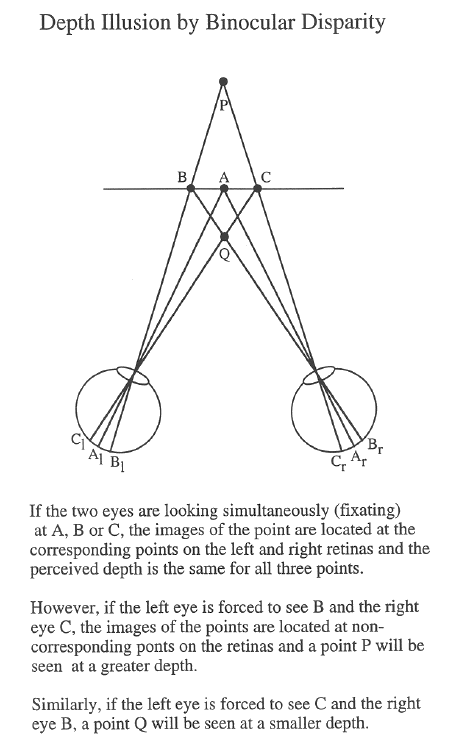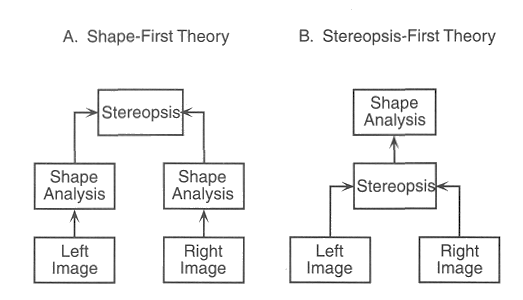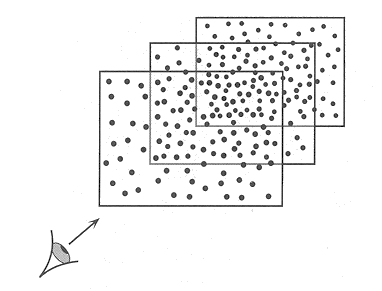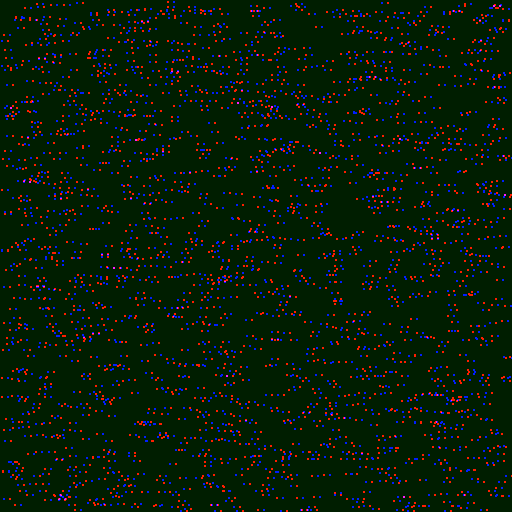
In the demo above, the pair of images (red and blue), each for one of the eyes to see (through a pair of red/blue glasses), is composed of the same set of dots randomly distributed in the space, except the dots in certain regions of the image that are shifted to the left in one image and to the right in another. When these two images are visually fused, this region of the image is perceived to be at a different depth from the rest (the background), pushed either inward (away from your eye) or outward (toward your eye) depending on the which eye sees which image. The reason for such a depth perception can be explained in this figure:

Note that the red/blue glasses are used to force, for example, the left eye to see B and right eye to see C, so that the perceived point is P which is farther away than the background. When you turn the glasses left-to-right, the left eye sees C and right eye sees B, the perceived point is Q which is closer than the background.
While the depth illusion can be easily explained by binocular disparity, there is a challenge (similar to the previous case) that still remains: how does the visual system establish the correspondence between the two sets of points on the left and right retinas? This experiment seems to show that in visual processing, the correspondence problem may be solved before, instead of after, the shape analysis stage, because, in the case, there is simply no shape to be analyzed or object to be recognized.

A possible remedy for this problem is to assume that the incoming visual information is processed by different types of neurons tuned to different spatial frequency bands, as discussed before. In the particular case, if the image containing the random dots is low-pass filtered (as can be done in the demo), then some kind of objects of various shapes and sizes may appear in the resulting image. Argument can be made that these objects may help with the establishment of the correspondence between the two images.
Another random-dot experiment by Prazdny (1984) uses random dots scattered on several transparent surfaces of different depths. The human visual system is able to perceive the different depths, although the random dots in a neighborhood of the retina image are likely from different surfaces with different depths. Moreover, in this case these dots do not form smooth and continuous surface.

